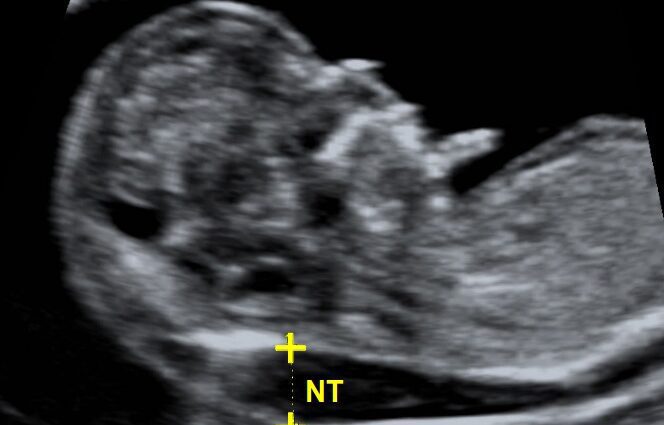Contents
What is nuchal translucency?
Nuchal translucency, as the name suggests, is located at the neck of the fetus. It is due to a small detachment between the skin and the spine and corresponds to a so-called anechoic zone (that is to say which does not return an echo during the examination). All fetuses have nuchal translucency in the first trimester, but the nuchal translucency then goes away. Focus on nuchal translucency.
Why measure nuchal translucency?
Measurement of nuchal translucency is the first step in screening for chromosomal diseases, and in particular for trisomy 21. It is also used to detect abnormalities in lymphatic circulation and certain heart diseases. When the measurement reveals a risk, doctors consider it a “call sign”, a trigger for further research.
When is the measurement taken?
The nuchal translucency measurement should take place during the first ultrasound of pregnancy, i.e. between 11 and 14 weeks gestation. It is imperative that the examination be done at this time, because after three months, the nuchal translucency disappears.
Nuchal translucency: how are the risks calculated?
Up to 3 mm thick, nuchal translucency is considered normal. Above, risks are calculated based on maternal age and term of pregnancy. The older the woman, the greater the risks. On the other hand, the more advanced the pregnancy is at the time of the measurement, the more the risk is reduced: if the neck measures 4 mm at 14 weeks, the risks are lower than if it measured 4 mm at 11 weeks.
Nuchal translucency measurement: is it 100% reliable?
The nuchal translucency measurement can detect more than 80% of cases of trisomy 21, but 5% of cases of too thick necks turn out to be false positives.
This examination requires very precise measurement techniques. During an ultrasound, the quality of the result may be impaired, for example by a bad position of the fetus.
Nuchal translucency measurement: what next?
At the end of this examination, a blood test called assay of serum markers is offered to all pregnant women. The results of this analysis, combined with maternal age and the measurement of nuchal translucency, make it possible to assess a risk of trisomy 21. If this is high, the doctor will offer the mother several options: either a TGNI , non-invasive prenatal screening (a blood sample from the mother) or performing a trophoblast biopsy or amniocentesis, more invasive…. These last two tests make it possible to analyze the karyotype of the fetus and to know exactly if it has a chromosomal disease. The risk of miscarriages being 0,1% for the first and 0,5% for the second. Otherwise, cardiac and morphological ultrasounds will be recommended.










